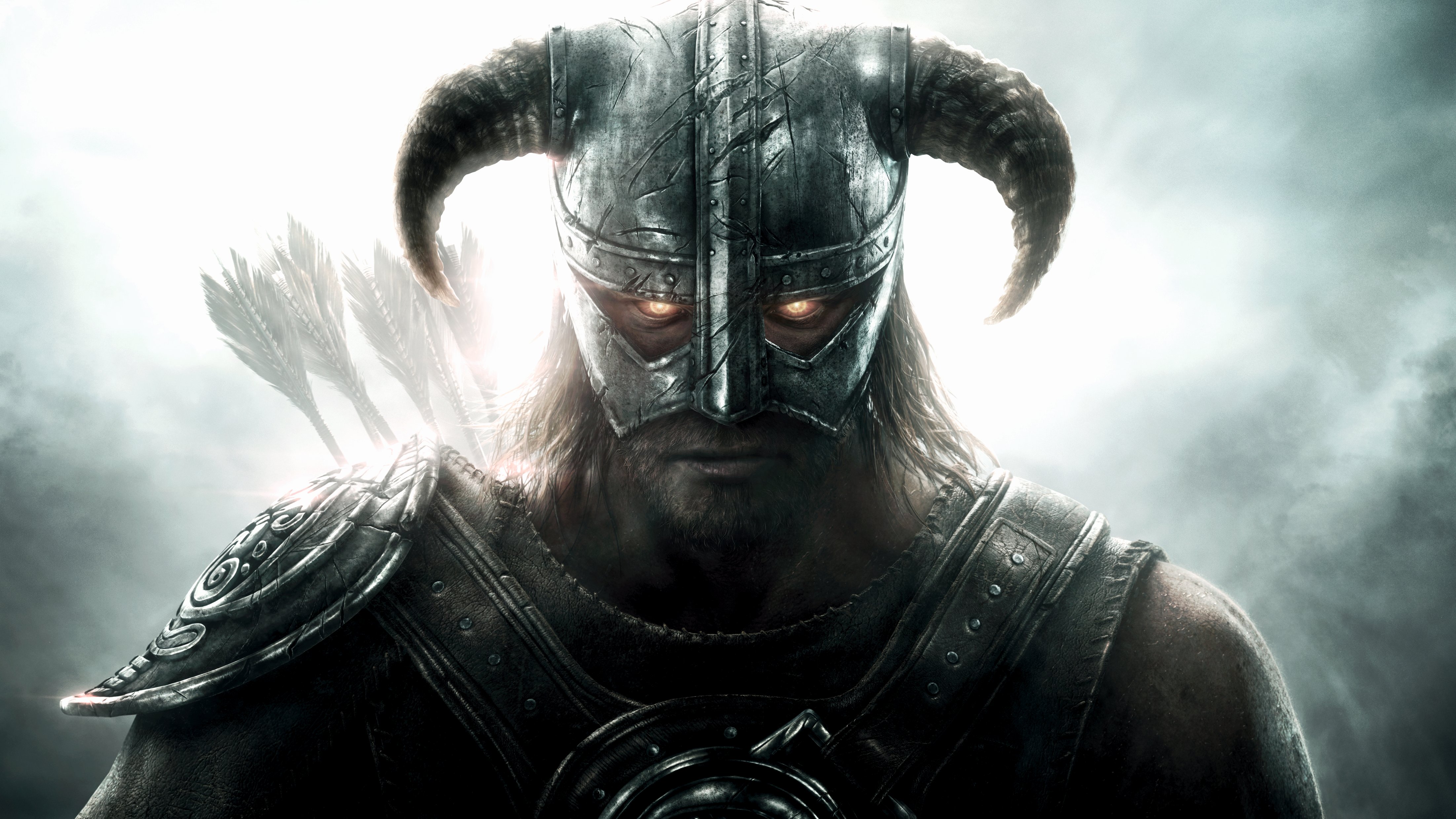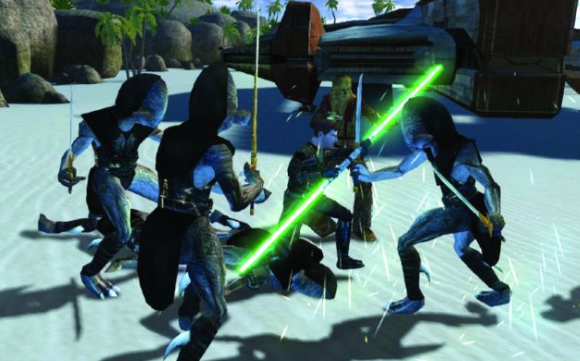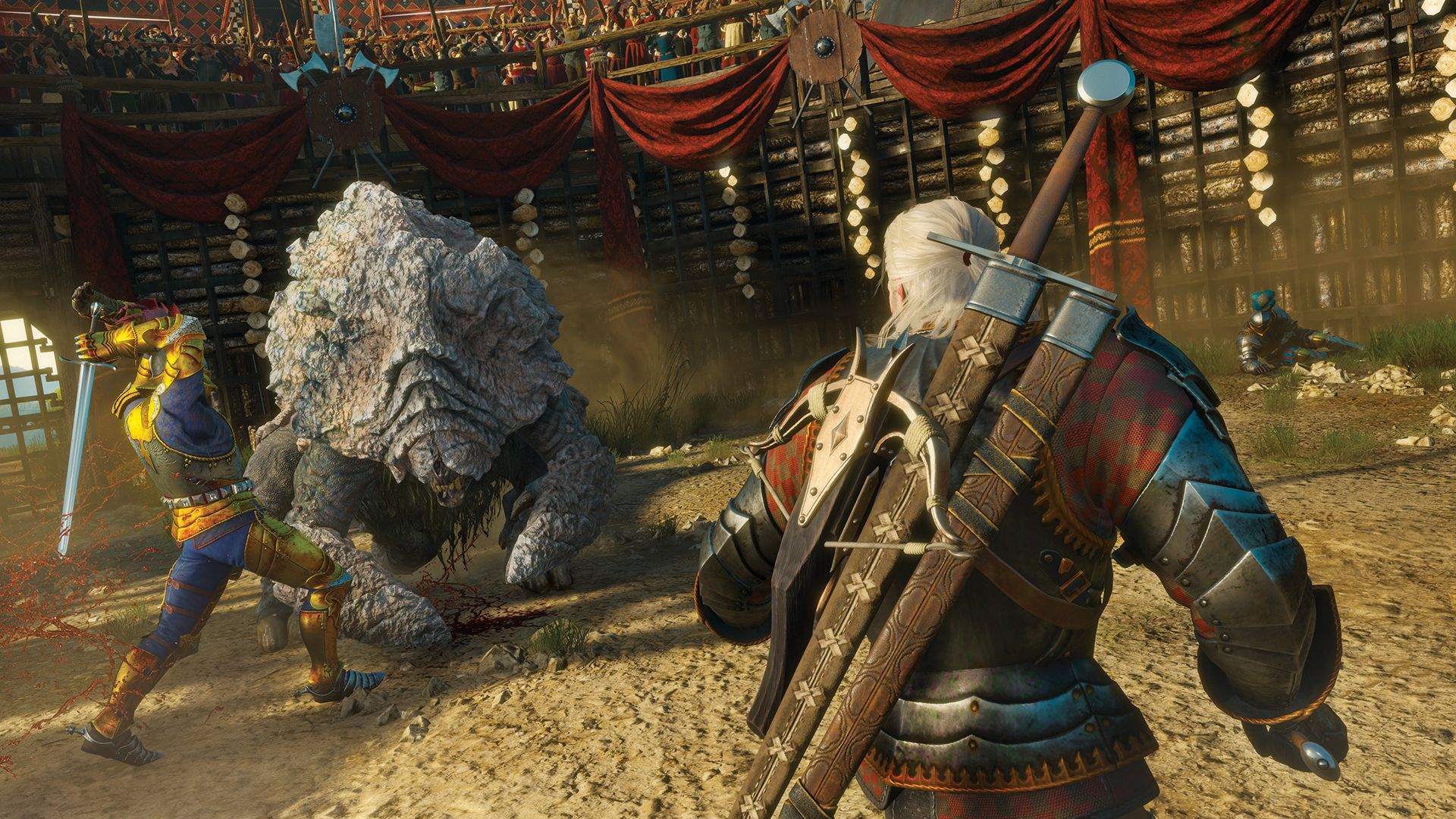The history of RPGs
Our comprehensive guide to PC RPGs spanning four decades—from Dungeon to The Witcher 3.

Something I’ve yet to mention is the role of console RPGs. The reason is, as far as the PC was concerned, they weren’t as popular or influential. JRPGs such as Final Fantasy 7 changed the game for consoles. But its PC version, released in 1998, was one of the worst produced ports most players had seen. Final Fantasy 8 didn’t do much better.
One of the few games that really embraced the console style was Tom Hall’s Anachronox, made by Ion Storm, which mixed Japanese RPG design with cool, imaginative science fiction to fine, if somewhat janky, effect. It was about the last real game to try to do so.
This all changed with the Xbox, the first truly successful Western console. Being a Microsoft product, it had a relationship with the PC, and afforded a chance for Western RPG developers to break away. The PC was struggling mightily at the time, to the point that many predicted it would burn out as a system.
Many developers spat out cut-down, simplified, and ultimately much hated versions of their games for this new market. Fallout: Brotherhood of Steel (2004, and no relation to Fallout Tactics: Brotherhood of Steel—a more successful attempt to focus on Fallout’s strategic combat back in 2001) threw out all of the intelligence in favour of storming around with guns. Baldur’s Gate: Dark Alliance was another action heavy game, sharing little with its source.
THE RISE & RISE OF RPGs: 2003—PRESENT

Knights of the new order
Enter BioWare once again, with Knights of the Old Republic. Unlike Baldur’s Gate, this was a full 3D experience, capable of conveying the awe-inspiring flashes and clashes of lightsaber combat, while still being a ‘proper’ RPG. In fact, it was a bit too much of one, still using and pushing its D&D systems, THAC0s and dice rolls into the foreground, even while pretending to have moved on from such things. It didn’t matter. This was the Star Wars epic the world had been waiting for, the perfect antidote to the disappointing movies, and an amazing sci-fi adventure unlike anything we’d ever seen before.
If there was any doubt that BioWare was now king of the genre, KotOR obliterated it. Its best characters became as loved as any in the franchise, particularly snarky assassin droid HK-47, while the spaceship Ebon Hawk quickly reached Millennium Falcon levels of popularity. The story acted as a Greatest Hits of Star Wars, delivering trips to Tattooine and the Wookie homeworld of Kashyyyk, fights with evil Sith Lords and bounty hunters, the chance to be as good or evil as you pleased, and planets being blown up in failed attempts to destroy your team. It even had a twist almost worthy of “Luke, I am your father,” based on the reveal of who your amnesiac main character actually was.
BioWare used this success as a springboard. Aside from an early stumble with its first attempt to create its own world, 2005’s Chinese-themed Jade Empire—a solid game, but one that didn’t catch the market as well—it created two of the biggest RPG series around. Mass Effect paired RPG-style action with third-person shooting, while Dragon Age began as an attempt to go back to BioWare’s Baldur’s Gate roots, but soon, after the more traditional first game Origins, became another action-RPG hybrid. With the two of them, the company had a firm grip on both sci-fi and fantasy, and the cash to make them as polished as any other game.
Keep up to date with the most important stories and the best deals, as picked by the PC Gamer team.
BioWare also repeatedly fought for the industry over the right to include controversial content, including sex scenes in the first Mass Effect.
BioWare also repeatedly fought for the industry over the right to include controversial content, including sex scenes in the first Mass Effect. These days it seems strange that there could be such a major, mainstream media controversy over such tame cinematics, but it needs to be put into context. It wasn’t long after Grand Theft Auto: San Andreas had whipped up a storm over the ‘Hot Coffee’ scandal (where players found evidence of clothed sex scenes that had been cut from the game but left on the disc). Many a pundit or worse—for instance, angry anti-gaming activist lawyer Jack Thompson—were still sniffing around, eager for blood. Fox News, for one, castigated Mass Effect’s sex scenes—which consisted of nothing more graphic than a glimpse of an alien’s blue bottom—describing them as “Luke Skywalker meets Debbie Does Dallas”.
Needless to say, the expert brought onto the panel hadn’t actually seen these game scenes and was going purely on what she’d been told before coming onto the show, ultimately describing it as “a bit of a joke”. Still, the pressure on BioWare was real, and in weathering that storm, the rest of the industry was able to push the boundaries—even if the Mass Effect crew did spend the rest of the series taking showers in their bras and pants. Later, BioWare committed to broadening the diversity of its casts, implementing bisexual characters in the Dragon Age games, and one of gaming’s few transsexual characters in Dragon Age: Inquisition.

The RPG grows up
BioWare did not have the entire decade to itself of course. The 2000s saw Bethesda go from strength to strength with its open-world Elder Scrolls games, selling millions upon millions of copies of Morrowind, Skyrim, and Oblivion to players looking for more of a freeform experience. It would also add a string to its bow by picking up the Fallout licence—along with a tangled knot of assorted legal issues—and restart the series with Fallout 3 in 2008. Much like BioWare, having a leg in both science fiction and fantasy hasn’t hurt, even if the best of the new Fallout games remains New Vegas, developed under contract by Obsidian Entertainment.
Many other companies started the new decade by going out of business. Origin’s final chapter of the Ultima series, Ascension, took over from Descent To Undermountain as the new Duke Nukem Forever of the RPG genre, only worse, because millions of players actually cared about Origin. Ascension crawled out of development hell in a barely functional and not remotely enjoyable state, ending the once proud Ultima series with a flatulent note of despair. Other companies, like Interplay, which should have been in a position to enjoy the genre’s resurgence, were too far into the red. On the plus side, many of the individual people involved were able to escape and form new companies. The Fallout team, for instance, recoalesced as Troika Games, while other Black Isle employees formed Obsidian Entertainment and survived by focusing on contract work rather than creating self-owned properties.
This was a tricky time for RPGs. Baldur’s Gate had become a huge success by going back to the genre’s roots, but at the same time, players were expecting the next big thing. On PC, that was Deus Ex, which combined RPG and FPS in ways that should need no explanation here. Even then, it was easy to slip up, as was seen with Deus Ex’s own sequel, Invisible War. A big problem was that, while consoles offered a whole new audience, the gulf between Xbox and PC in terms of power was ridiculous, forcing any game that went for both to play to the lowest common denominator. In the case of Invisible War, that meant going from levels that modelled the whole of Liberty Island in New York, to levels that are literally ten seconds between load screens. The controller was also no match for a PC’s keyboard and mouse, making it impossible to carry many of its best experiences across.

The consequence was that developing for both was a gamble, but so was focusing on the PC and ignoring the wider market. Troika quickly became the most high-profile casualty of this. Its first game tried to fuse what players loved about Fallout with fantasy, in a new Victorian-style world where magic and technology coexisted. Unfortunately they called it Arcanum: of Steamworks And Magick Obscura, a title so relentlessly geeky that players reported their virginity growing back just from hearing it. It was a popular game with those who played it, though not a megahit by 2000s standards. Next, the company tried going back further to the genre’s roots with a conversion and upgrade of the classic D&D module The Temple of Elemental Evil. Unfortunately, its adherence to the mechanics wasn’t enough to compensate for the lack of things like a plot, or how old-fashioned it felt. (For starters, the game’s village is called Hommlet. Not Gary Gygax’s most inventive moment.)
Finally, the company released one of the 2000s’ most beloved and poorest-selling games, Vampire: The Masquerade: Bloodlines—the second attempt to bring the World of Darkness universe to the PC. Best summed up as “Deus Ex, but with vampires”, it bombed at release, and Troika didn’t survive it. Players kept it alive through word of mouth and fan patches, and it’s still being updated and praised today as one of the few adults-only RPGs that earned its place through dark atmosphere and intelligence. It wasn’t that it avoided the sexy vampire trope, but that its vampires were designed and written to be more than just that—pieces in a game that, among other things, punished you for trying to do the right thing by inadvertently condemning an innocent college girl to be your mindless thrall, dealing with the broken personalities of an abusive family, exploring a crazed mental asylum, and, in its most famous level, exploring a haunted house that’s strangely effective at creating scares—despite the fact that you are a powerful vampire yourself.

Wake the white wolf
If one company really came into its own through all these challenges, it’s CD Projekt Red, with the Witcher series. The Witcher is a hugely successful series of books in its native Poland—and around Europe as a whole—but was little known when an obscure development company bought a licence to BioWare’s Aurora engine and tried to bring the stories to the world.
Skipping ahead, The Witcher 3 is an amazing experience. It’s a glorious-looking world. The writing is touching, detailed, nuanced, with varied characters. It’s one of the best games ever made, never mind one of the best RPGs—cementing creators CD Projekt Red as being on the absolute top-tier of modern development, even above BioWare in most estimations. However, at least part of what makes it so impressive is having seen the stumbles and triumphs on the way to making it happen.
The first Witcher game, for instance, was so poorly translated as to be nonsensical, requiring a whole Enhanced Edition to come vaguely up to standard. It also featured some deeply unpopular game mechanics, such as representing hero Geralt’s many trysts as collectible cards—as if the ladies in his life were nothing but Pokémon to be captured and catalogued. Or, less socially relevant but just as annoying, having to collect increasingly expensive books in order to take on quests that Geralt should have been more than capable of doing on his own with just his sword.
The first Witcher game, for instance, was so poorly translated as to be nonsensical, requiring a whole Enhanced Edition to come vaguely up to standard.
The Witcher 2: Assassins of Kings, meanwhile, was proof that, more than any other company in recent memory, CD Projekt had read every single complaint about the first game and fixed it, and had the ambition to take the series further than anyone could have expected. Of its three acts, there are two variants of Act 2 that take Geralt to opposite sides of the game’s central war. It still had sex scenes, but here they’re choreographed affairs designed to say something about the characters involved—parts of the story that contribute to, rather than distract from, the experience.
Looking back, the first two games are less The Witcher 3’s predecessors as its betas—the games CD Projekt had to make first to be able to create the Witcher experience it had dreamed of so long ago.

Diamonds in the rough
The Witcher’s path to greatness isn’t unique to CD Projekt. It’s worth highlighting a few of the other games that have slowly but surely become legendary over the last decade. Larian’s Divinity series, for instance. It began in 2002 with Divine Divinity (the publisher’s choice of name, the developer is quick to explain). It was popular, but still best described as a company attempting to make Ultima 7 without first having made Ultimas 1-6. The series was constantly besieged by two factors. Financial issues on the outside led to the third game, Divinity 2, being a “release it now or lose the company” affair. (To its credit, Larian later tried to fix up the mess created by such a rushed release.)
But also, Larian had a tendency to let the cool, big ideas overshadow the foundations needed for a good RPG. Let’s make the player character psychic! Let’s have the player turn into a dragon! In the case of the strategy-focused Divinity: Dragon Commander, let’s have the player be a dragon wearing a jetpack! You know? That kind of thing. With the Kickstarted Divinity: Original Sin, however, the company finally found its footing, and created one of the best new RPGs in years. It was an instant classic, which earned everyone involved the credit they deserved, and led to the even more ambitious but equally grounded sequel, Divinity: Original Sin 2.
Many others have also found new life thanks to Kickstarter, both games that have found their due and those that deserved better. The Bard’s Tale. Wasteland. The Infinity Engine, through Pillars of Eternity. Planescape: Torment, through Torment: Tides of Numenera. Shadowrun. Shenmue. Underworld. System Shock. Pathologic. Outcast. The list goes on, and is mostly filled with titles that did something so amazing that nothing else has come close in five, 10, sometimes even 20 years. It’s not just the hunger for something familiar that’s driven it, though. This isn’t simply a plea to nostalgia. It’s a combining of genuine classics with top quality developers—teams that do enough justice to the original idea that they stand up against any game you could possibly want.
Their original stories may now be over, and the quests long since complete. But these are legends that live on. May they do so forever.

